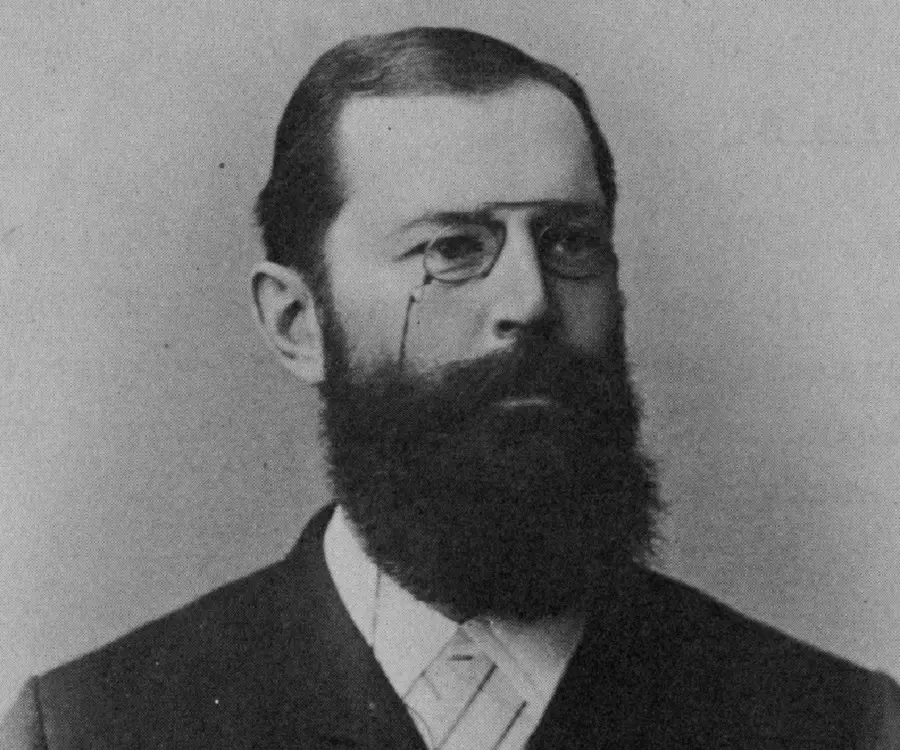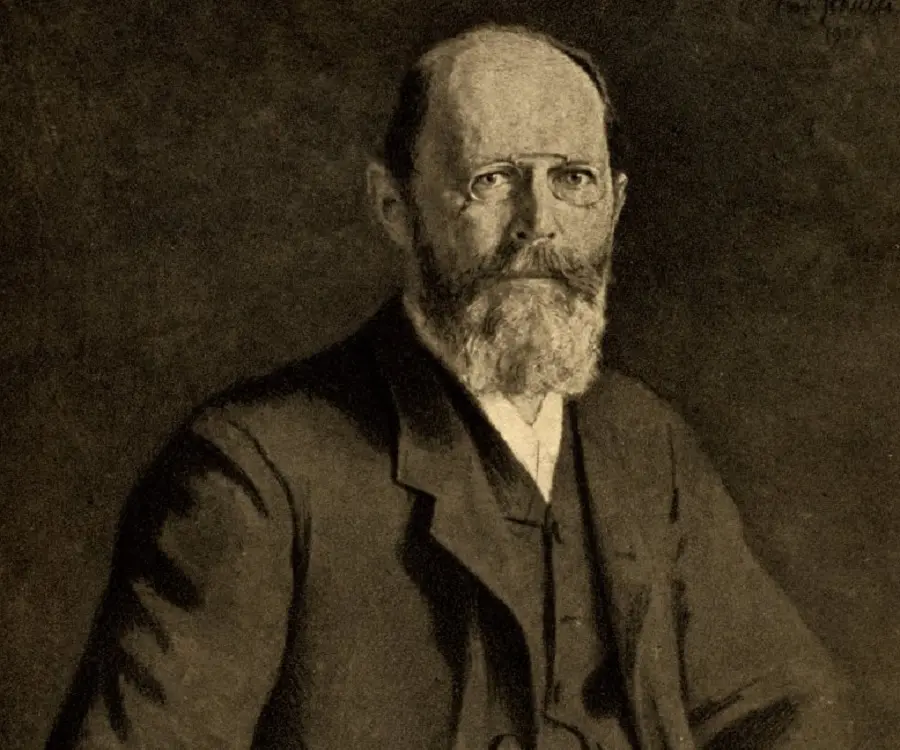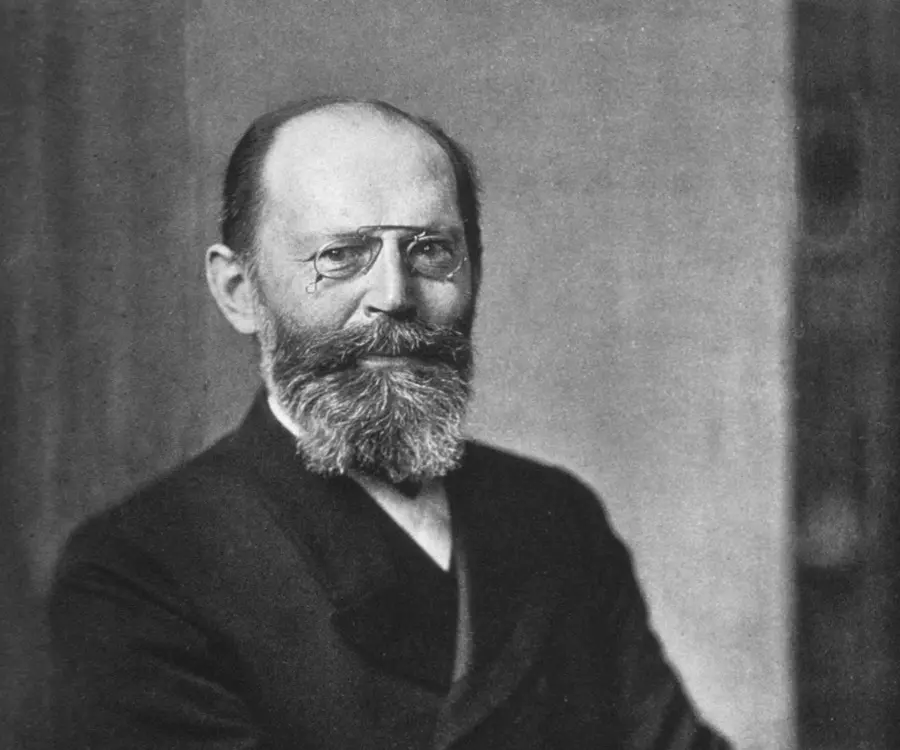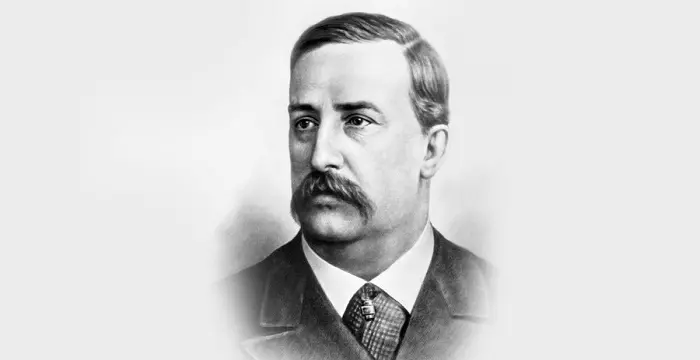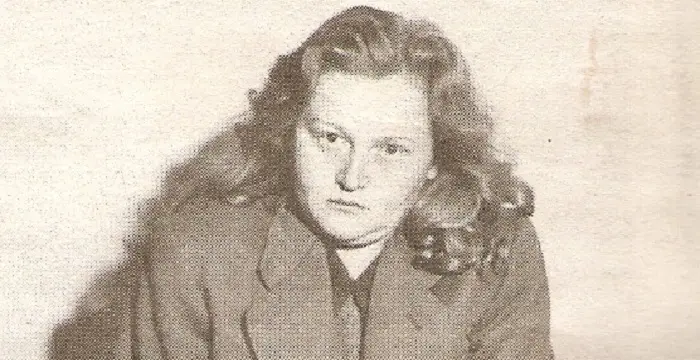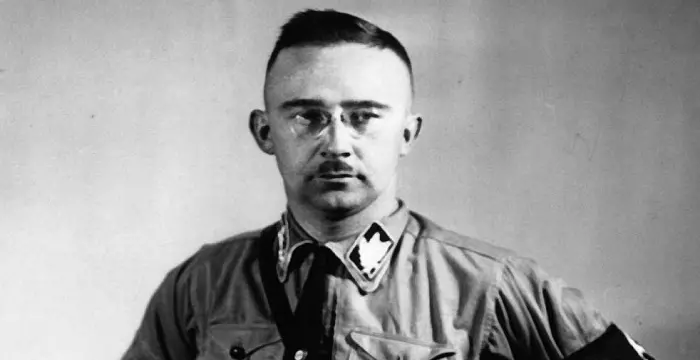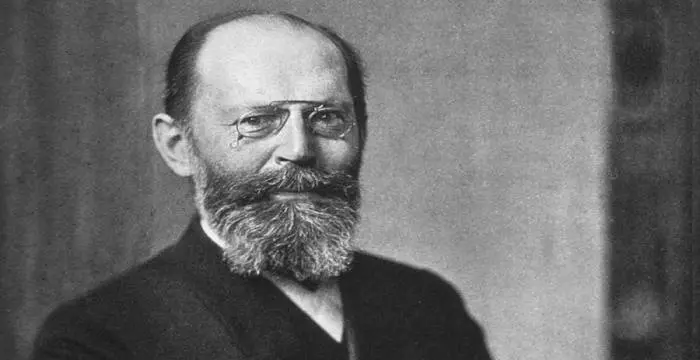
Hermann Emil Fischer - Scientists, Birthday and Childhood
Hermann Emil Fischer's Personal Details
Emil Fischer was a Nobel Prize winning chemist from Germany who is known for inventing the ‘Fischer Projection’ method
| Information | Detail |
|---|---|
| Birthday | October 9, 1852 |
| Died on | July 15, 1919 |
| Nationality | German |
| Famous | Scientists, Chemists, Organic Chemists |
| Known as | Franz Joseph Emil Fischer, Emil Hermann Fischer |
| Universities |
|
| Cause of death |
|
| Birth Place | Euskirchen |
| Gender | Male |
| Sun Sign | Libra |
| Born in | Euskirchen |
| Famous as | Chemist |
| Died at Age | 66 |
// Famous Scientists
Juliane Koepcke
Juliane Koepcke is a German-Peruvian biologist, who was the lone survivor among the 92 passengers and crew of the ill-fated LANSA Flight 508 that crashed in the Peruvian rainforest on 24 December 1971. Know more about her life in this biography.
Henry Cavendish
Henry Cavendish was a theoretical chemist and physicist, renowned for discovery of hydrogen and calculation of the mass of earth. To know more about his childhood, profile, timeline and career read on
Konstantin Tsiolkovsky
Konstantin Tsiolkovsky was a Russian rocket scientist and a pioneer of astronautics. This biography provides detailed information about his childhood, family, personal life, career, achievements, etc.
Hermann Emil Fischer's photo
Who is Hermann Emil Fischer?
Emil Fischer was a renowned German chemist of the nineteenth century who did pioneering work in the field of organic chemistry. Hailing from a business oriented family, Fischer’s life would have been radically different had he given into the will of his father, who wanted his only son to succeed his business. But with his determination, he completed his education from reputed institutes like University of Bonn and University ofStrasbourg. His mentor Adolph von Baeyer developed Emil’s interest in organic chemistry and the latter went on to win a Nobel Prize for his contribution to the field. Though his very first discovery, a derivative of hydrazine was dismissed by many as a mere fluke, he silenced his critics with his further discoveries. The caffeine which is the main ingredient in beverages like coffee, was first discovered by this eminent chemist. He identified the class of compounds similar to caffeine and named them as purines. He was also involved in significant research work related to sugars, proteins and enzymes. The renowned scientist has left behind a great scientific legacy and many of his theories and concepts such as the ‘Fischer Projection’ method and ‘Fischer esterification’ still hold good. Read on the following biography to know more about the life and works of this great scientific mind.
// Famous Chemists
Henry Cavendish
Henry Cavendish was a theoretical chemist and physicist, renowned for discovery of hydrogen and calculation of the mass of earth. To know more about his childhood, profile, timeline and career read on
Walter Kohn
Nobel Laureate Walter Kohn was an Austrian-born American theoretical chemist and physicist. Check out this biography to know about his childhood, life, achievements, works & timeline.
Jabir Ibn Hayyan
Jabir Ibn Hayyan was a medieval era polymath. Check out this biography to know about his life, works and achievements.
Childhood & Early Life
Herman Emil Louis Fischer was born on 9 October, 1852 to Laurenz and Julie Fischer in the Euskirchen town of Germany. Laurenz was a successful entrepreneur dealing in the lumber industry.
Louis was initially home tutored and later enrolled in school; he completed his schooling from the cities ofWetzlar and Bonn. After appearing for his final examinations in 1869, wherein he performed exceptionally, the bright mind wanted to pursue higher studies.
As the only living child of his parents he was expected to join the family business. But eventually his father agreed to let him pursue the study of natural sciences. Hence in 1871, Fischer was enrolled at the ‘University of Bonn’.
Initially inclined to specialize in physics, he moved to the ‘University of Strasbourg’ in 1872, along with his cousin Otto Fischer; who would later become his research partner.
At Strasbourg, his encounter with the director of chemical institute, Adolph von Baeyer sparked his lifelong interest in chemistry. Baeyer was credited with the discovery of phthalein dyes and Emil worked under him during his doctoral studies.
In 1874, he was awarded a Ph.D. in chemistry and his doctoral dissertation delved into study of organic compounds fluorescein and orcin-phthalein.
Career
In 1874, he was offered the position of a research assistant at the ‘University of Strasbourg’. It was while working as an assistant in the organic chemistry laboratory under von Baeyer, that he discovered the first hydrazine derivative compound, phenylhydrazine.
In 1875, following the discovery of phenylhydrazine, Emil accompanied von Baeyer to the ‘University of Munich’ as an assistant. Three years later he was conferred upon the title of Privatdozent, which allowed him to teach university level courses.
In 1879, the ‘University of Munich’ offered him the position of Associate Professor of Analytical Chemistry. During his time at the university, he was devoted to the study of hydrazines. Along with Otto Fischer, the duo worked on demonstrating the constitution of chemical derivatives of triphenylmethane.
The ‘University of Erlangen’ offered Fischer the position of a professor of chemistry in 1881. It was here that he studied the compounds in tea and coffee and explained the molecular structures of compounds like caffeine and theobromine. He named this class of compounds as “purines” and even synthesised them artificially.
He went to the ‘University of Würzburg’ in 1885 and took up the job of a professor in chemistry; a position he would hold for the next eight years.
He continued his research work on purines and discovered that this family of bases even constituted the DNA.
Fischer then embarked on a study of sugars and devised the ‘Fischer Projection’ method to depict their molecular structure on a 2-D surface such as paper.
In continuation to his study of sugars, he studied the fermentation caused in sugar by enzymatic action. His ground-breaking work on organic compounds including purines and sugars earned him the Nobel Prize in the year 1902.
This eminent chemist then embarked on the study of proteins and deduced that the amino acids in proteins are linked by what are known as “peptide bonds”. He chemically synthesised artificial protein by linking amino acids with the amide bonds to scientifically prove his inferences.
Major Works
Emil Fischer was a renowned name in the world of chemistry and his work on the family of bases named purines, and sugars earned him a Nobel Prize. The ‘Fischer Projection’ method of representing the molecular structure of sugar was also devised by this eminent chemist.
Awards & Achievements
The world-renowned chemist was honoured with a Nobel Prize in 1902 for his contribution to the world of organic chemistry.
He was also presented with the ‘Prussian Order of Merit’ and ‘Maximilian Order for Arts and Sciences’.
Personal Life & Legacy
Emil exchanged the nuptial vows with Agnes Gerlach in 1888 and the couple had three sons.
On 15 July 1919, this eminent chemist ended his life by overdosing on phenylhydrazine.
He is the eponym of several chemical reactions and concepts including the ‘Fischer projection’, ‘Fischer oxazolesynthesis’ and ‘Fischer peptide synthesis’
// Famous Organic Chemists
Dmitri Mendeleev
Dmitri Mendeleev was a Russian chemist who is best known for his discovery of the periodic law. Check out this biography to know about his childhood, life, achievements, works & timeline
Aleksandr Borodin
Aleksandr Borodin was a prodigal Russian music composer and scientist. This biography gives detailed information about his childhood, life, works, achievements and timeline.
Robert Burns Woodward
Robert Burns Woodward was a Nobel Prize winning American chemist known for his work on complex natural products. Check out this biography to know about his childhood, life, achievements, works & timeline.
Hermann Emil Fischer's awards
| Year | Name | Award |
|---|---|---|
Other | ||
| 0 | 1902 - Nobel Prize in Chemistry | |
| 0 | Elliott Cresson Medal | |
Hermann Emil Fischer biography timelines
- // 9th Oct 1852Herman Emil Louis Fischer was born on 9 October, 1852 to Laurenz and Julie Fischer in the Euskirchen town of Germany. Laurenz was a successful entrepreneur dealing in the lumber industry.
- // 1869Louis was initially home tutored and later enrolled in school; he completed his schooling from the cities ofWetzlar and Bonn. After appearing for his final examinations in 1869, wherein he performed exceptionally, the bright mind wanted to pursue higher studies.
- // 1871As the only living child of his parents he was expected to join the family business. But eventually his father agreed to let him pursue the study of natural sciences. Hence in 1871, Fischer was enrolled at the ‘University of Bonn’.
- // 1872Initially inclined to specialize in physics, he moved to the ‘University of Strasbourg’ in 1872, along with his cousin Otto Fischer; who would later become his research partner.
- // 1874In 1874, he was awarded a Ph.D. in chemistry and his doctoral dissertation delved into study of organic compounds fluorescein and orcin-phthalein.
- // 1874In 1874, he was offered the position of a research assistant at the ‘University of Strasbourg’. It was while working as an assistant in the organic chemistry laboratory under von Baeyer, that he discovered the first hydrazine derivative compound, phenylhydrazine.
- // 1875In 1875, following the discovery of phenylhydrazine, Emil accompanied von Baeyer to the ‘University of Munich’ as an assistant. Three years later he was conferred upon the title of Privatdozent, which allowed him to teach university level courses.
- // 1879In 1879, the ‘University of Munich’ offered him the position of Associate Professor of Analytical Chemistry. During his time at the university, he was devoted to the study of hydrazines. Along with Otto Fischer, the duo worked on demonstrating the constitution of chemical derivatives of triphenylmethane.
- // 1881The ‘University of Erlangen’ offered Fischer the position of a professor of chemistry in 1881. It was here that he studied the compounds in tea and coffee and explained the molecular structures of compounds like caffeine and theobromine. He named this class of compounds as “purines” and even synthesised them artificially.
- // 1885He went to the ‘University of Würzburg’ in 1885 and took up the job of a professor in chemistry; a position he would hold for the next eight years.
- // 1888Emil exchanged the nuptial vows with Agnes Gerlach in 1888 and the couple had three sons.
- // 1902In continuation to his study of sugars, he studied the fermentation caused in sugar by enzymatic action. His ground-breaking work on organic compounds including purines and sugars earned him the Nobel Prize in the year 1902.
- // 1902The world-renowned chemist was honoured with a Nobel Prize in 1902 for his contribution to the world of organic chemistry.
- // 15th Jul 1919On 15 July 1919, this eminent chemist ended his life by overdosing on phenylhydrazine.
// Famous Suicide peoples
Monika Dannemann
Check out all that you wanted to know about Monika Dannemann, the famous German Figure Skater & Painter; her birthday, her family and personal life, her boyfriends, fun trivia facts and more.
Ilse Koch
Ilse Koch was the wife of Karl-Otto Koch, the chief of the Nazi concentration camps in Buchenwald and Majdanek. This biography profiles her childhood, life, crimes, and timeline.
Marilyn Monroe
Marilyn Monroe was a famous and one of the foremost and biggest sex symbol of Hollywood. This biography of Marilyn Monroe provides detailed information about her childhood, life, achievements, works & timeline.
Heinrich Himmler
Heinrich Himmler was a German Nazi military commander and a close associate of Adolf Hitler. This biography profiles his childhood, family, personal life, role in concentration camps and his death.
Cheyenne Brando
Cheyenne Brando was a Tahitian model best known as the daughter of legendary American actor Marlon Brando. Check out this biography to know about her childhood, family, personal life, etc.
Jonathan Brandis
Jonathan Brandis was an American actor known for his role in the miniseries ‘It.’ Check out this biography to know about his birthday, childhood, family life, achievements, and fun facts about him.
Hermann Emil Fischer's FAQ
What is Hermann Emil Fischer birthday?
Hermann Emil Fischer was born at 1852-10-09
When was Hermann Emil Fischer died?
Hermann Emil Fischer was died at 1919-07-15
Where was Hermann Emil Fischer died?
Hermann Emil Fischer was died in Berlin
Which age was Hermann Emil Fischer died?
Hermann Emil Fischer was died at age 66
Where is Hermann Emil Fischer's birth place?
Hermann Emil Fischer was born in Euskirchen
What is Hermann Emil Fischer nationalities?
Hermann Emil Fischer's nationalities is German
What was Hermann Emil Fischer universities?
Hermann Emil Fischer studied at University of Bonn, University of Strasbourg
What is Hermann Emil Fischer's cause of dead?
Hermann Emil Fischer dead because of Suicide
What is Hermann Emil Fischer's sun sign?
Hermann Emil Fischer is Libra
How famous is Hermann Emil Fischer?
Hermann Emil Fischer is famouse as Chemist



